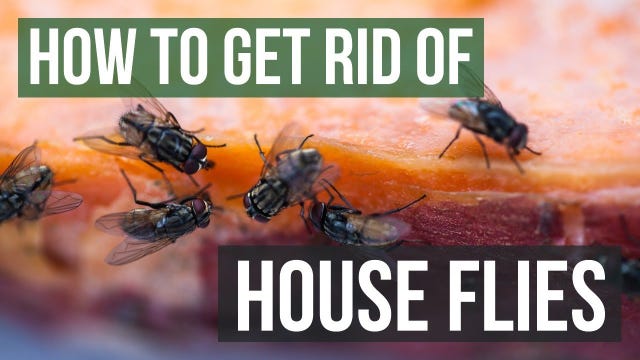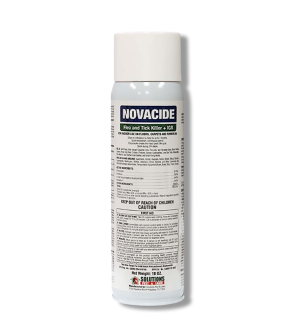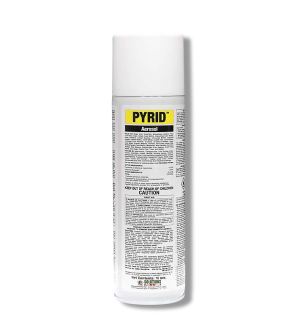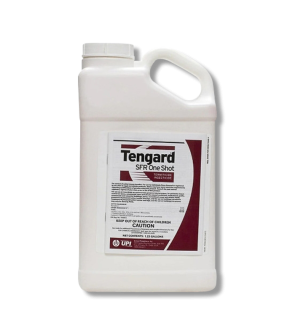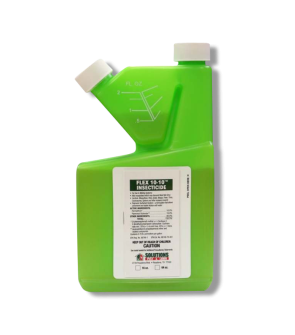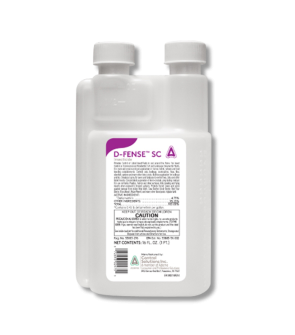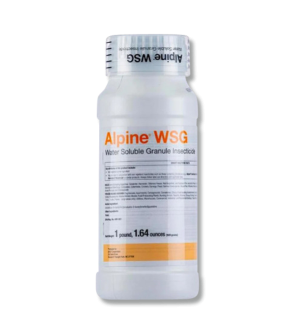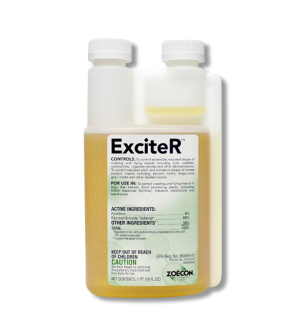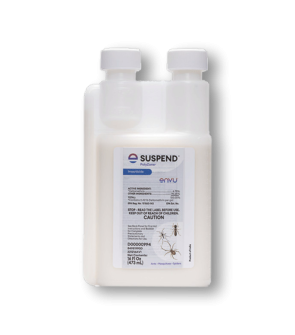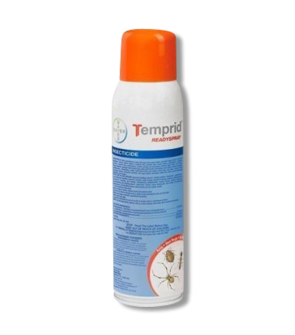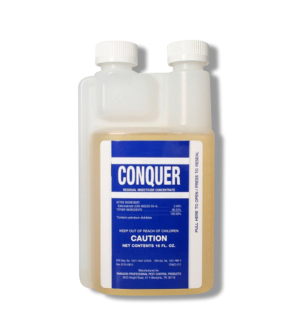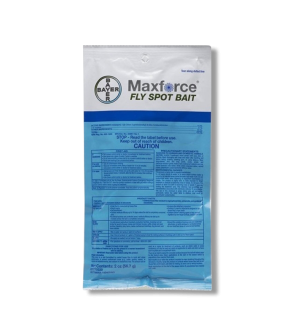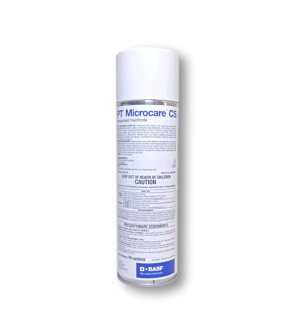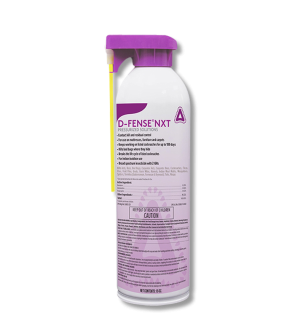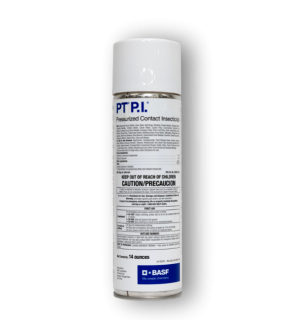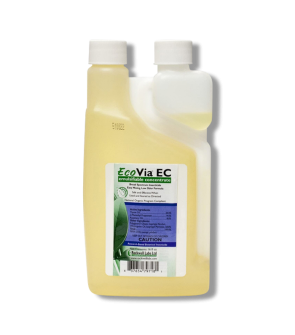Gain access to personalized product screening, the best pricing, rewards, and more!
Most Effective Products
House Fly Control: How To Get Rid of House Flies
This page is a general house fly control guide. Using the products and methods suggested, you will get control of house flies. Follow this guide and use the recommended products; we guarantee 100% control of house flies.
If there is one pest that is universally hated in all parts of the world, it's the common house fly. These annoying buzzing pests can be found in virtually any location and are tough to eliminate once they have entered a home.
Homeowners are often baffled that house flies come from out of nowhere when food is lying inside or outside. While they don't sting or bite, house flies can cause harm by spreading the organisms that cause typhoid, fever, dysentery, tuberculosis, leprosy, hookworm, cholera, diarrhea, and numerous other hazardous diseases if left unchecked.
House flies are dangerous to both pets and humans because they spread and pick up bacteria when foraging for food. Since they love decomposing materials (like garbage, carcasses, and feces), they pick up lots of bacteria that they tend to transfer to food serving surfaces and to the food themselves.
If your home or property offers them decomposing organic materials, these flies will not hesitate to set up camp. Not keeping up with sanitation, delaying taking out the garbage, letting spills sit for a while, and not picking up after your pets will attract Houseflies to your property.
Our DIY house fly control guide below will teach you a little bit about this nuisance pest and how you can kill and get rid of house flies quickly with our expert advice and professional product recommendations.
Identification

Before carrying out a control program, you must identify and ensure you deal with houseflies and not other kinds of flies.
- House flies differ from cluster flies and fruit flies in that they are usually gray and black and are between 1/4 of an inch long with four dark stripes on the thorax.
- The typical house fly can live anywhere from 2 to 4 weeks, depending on climate and food supply. House flies can also fly long distances, up to 20 miles at a time.
- House flies are commonly found near decomposing materials, such as dead animal carcasses, garbage cans, compost piles, or feces. They are also attracted to moisture and might visit your home, livestock area, or business if there is a moisture issue that hasn't been addressed.
Use the description and image above to identify house flies on your property. If you need assistance, call us, and we will help you with proper identification.
Inspection
Once you have correctly identified house flies, you can proceed with an inspection. House flies are attracted to moisture and rotting matter, so you need to pinpoint the decomposing materials attracting them and where they are concentrated.
Where To Inspect
Houseflies thrive and feed on anything filthy, smelly, or unsanitary. They are usually found hovering around garbage, compost, feces, fertilizer, fish, manure, sewage, human excrement, etc.
Most house fly infestations occur indoors. Search your garbage cans, in and around spoiled food (fruits, vegetables, meats, etc.), near feces like litter boxes (or the yard if you have a dog that creates feces outside), or even compost piles. Search the kitchen, bathrooms, and any room of your home where these items are available.
In livestock areas, check areas where livestock are most active, such as barns or pens. The female flies will feed off the animal's blood, while the males will be attracted to their waste for breeding sites. Areas with running water will most likely be egg-laying areas for flies. If you notice flies in your living quarters, it might be because they infest an area nearby.
What To Look For
You're looking for house flies and decomposing materials. This means looking at all the places and items mentioned above. The rotting matter shouldn't be too hard to find because the awful smell will tip you off to where it is located. Where the bad smell is, you will most likely also find flies.
If you have found decomposing materials or the house flies themselves hovering over certain areas, this is where you will apply the treatment.
Treatment
Once you have confirmed house fly activity, it is time to begin treatment. Remember to read all product labels, follow the application instructions on these labels, and stay safe by wearing personal protective equipment (PPE).
Getting rid of house flies involves locating the decomposing or filthy source that attracts them to your home, sanitizing the area, and applying fly traps and insecticides to eliminate the population.
Step 1: Sanitize Your Home
Before applying products, you need to prepare your home for treatment with proper sanitation. Start by cleaning your home. Wipe countertops, mop, and vacuum to get rid of spills or food crumbs that you might have in your kitchen. Check for spills under and around appliances. Get rid of spoiled food that has been left out on the counters.
Check your garbage cans, make sure there is no garbage or spills at the bottom, and regularly take them out when they get full. Seal all food goods in plastic containers and keep your garbage in a sealed bin both indoors and outdoors.
If you have pets, clean litter boxes or pick up feces from the yard, as these will also attract flies to your home. Locating and removing the filth source will naturally eliminate flies, as they will leave when the organic matter that has attracted them has been cleaned up.
Step 2: Capture Lingering Flies with Fly Traps
While most flies leave after a good cleanup, some will linger around. This is when a fly trap, such as a Musca-Stik fly trap, will be useful. Musca-Stik Traps is an insecticide-free trap that uses pheromones to attract houseflies directly to the trap, which is full of glue. These Houseflies will become stuck and unable to move and eventually die.
Simply pour the pheromone packet into the catch basin at the end of the stick and place it high above the places where house fly activity has been observed.
Alternatively, we recommend the Mantis Fly Light if you're having house fly infestations in warehouses and commercial buildings. This product is a lightweight, ready-to-use fly light trap that will attract house flies.
The product's lights do not zap or instantly kill the house flies but rather attract them to fly inside. A glue board will catch them, and they will become stuck and, with time, die.
Step 3: Spray Pyrid Aerosol
As an added measure for controlling house flies, we recommend using Pyrid Aerosol. This pyrethrin aerosol can be used as a contact spray to kill any remaining flies.
Simply point and spray any House Fly around your property to quickly knock them down and kill them.
Apply at the rate 1 to 3 seconds per 1,000 cubic feet.
If spraying in the kitchen, put away food serving items or eating utensils exposed. Do not let people or pets enter areas treated until 15 minutes have gone by and the rooms have been ventilated. If spraying in the kitchen, clean the countertops and food serving surfaces after treatment.
Step 4: Mix and Apply Flex 10-10
For livestock areas where house flies are prevalent, we recommend applying Flex 10-10. Flex 10-10 is a broad-spectrum product for indoor or outdoor control.
Begin by determining how much Flex 10-10 you need to mix by measuring the square footage of the treatment area. Find the square footage by measuring the treatment area's length and width in feet, then multiply them together (length x width = square footage).
The mixing rate for Flex 10-10 is 6.4 fluid ounces per gallon of water. One gallon of solution will typically treat 1,000 square feet. For example, if you wanted to treat a 2,000-square-foot area, you would need to mix 12.8 ounces of Flex 10-10 in 2 gallons of water.
Fill your spray tank halfway with water, add your desired amount of Flex 10-10, then add the remaining half of water.
Close the tank and shake well to agitate. Use a direct spray to treat walls, ceilings, screens, door frames, and window frames. Be sure to remove all livestock from the area and cover all food before applying your solution. Do not use Flex 10-10 near water.
If you are applying this to your animals, use a fan spray setting. Make sure you use enough product to wet the hair thoroughly, especially the topline, underlines, flanks, withers, and other infested areas. You can reapply treatment every 5 to 12 days until there is no more fly activity.
Prevention
Once the house flies have been cleared out of your home, you don't want them coming back. Prevent house flies from returning by taking on several of the preventative measures below:
- Prevent house flies by keeping your home as clean as possible. Wipe countertops, stoves, and food serving surfaces frequently. Mop and vacuum regularly, and do not let trash build up inside your home.
- If you have pets, clean up after them regularly, and do not let the yard get filled with feces. Clean up any food crumbs and spills immediately, and do not let them sit for a while. Get rid of rotting fruit or decomposing materials from your property.
- You will also want to limit access to your home as much as possible by sealing up gaps, holes, and other cracks and crevices that can serve as a point of entry for flies. Use caulk to go around the exterior of your home and apply it around windows, doors, and any other entry points you notice.
Key Takeaways
What are House flies?
- House flies are a notorious pest that infests homes when a rotting or decomposing source is available for the flies to feed and breed on.
- The average house fly has a black or dark gray colored body with black vertical lines on their thorax and two goldish to silver stripes on their face with big buggy darkish red eyes. In their larvae stage, they are squiggly, slimy, cream-colored grubs with a pointed head. In their pupal stage, they are dark brown, round, and taper from front to back.
How To Get Rid of House Flies in the Home
- To get rid of house flies, locate and dispose of the filth source and thoroughly sanitize your home. Then, traps such as Musca-Stik or Mantis Fly Light can be applied to capture lingering flies or spray them in contact with Pyrid Aerosol.
- For the treatment of houseflies in the livestock area, a mixture of Flex 10-10 can be applied to areas of high activity and directly to animals to keep houseflies off of them.
Preventing House Fly Reinfestation
- Keep a regular cleaning schedule around your home to prevent House Flies from returning. This means cleaning up regularly, not letting foods spoil, discarding garbage from your home, and changing garbage bags regularly, along with exclusion measures such as sealing gaps and holes and any other points of entry into the home with caulk.






